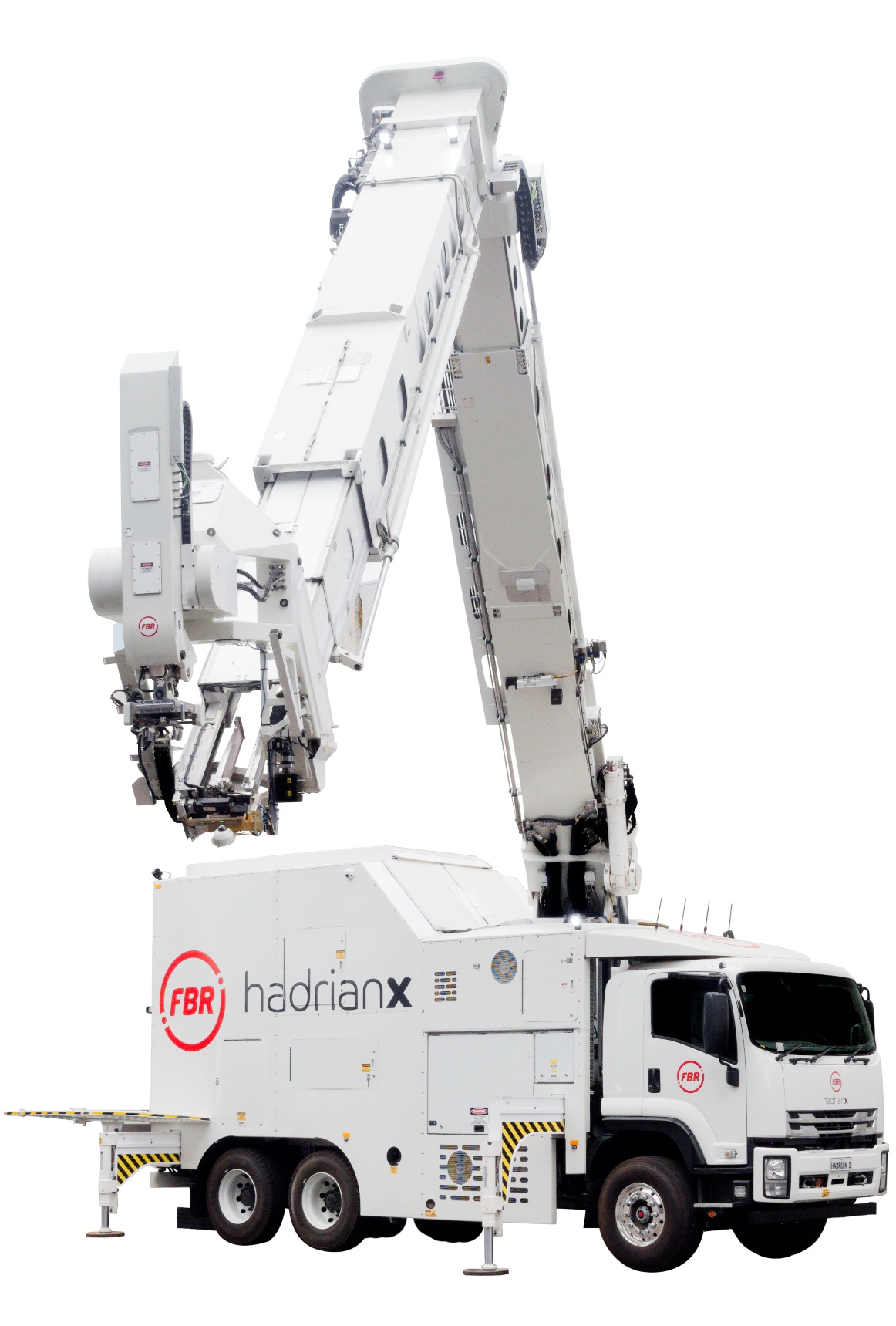Perth, Australia-based robotics company FBR – formerly known as Fastbrick Robotics – has built its first two-storey house using its Hadrian X block-laying robot, which has been in development since 2015.
 Located on FBR’s premises, the structure is of a style common in developing countries that FBR aims to target, including Mexico, the Middle East, North Africa and Asia.
It was the first time the robotic block-laying approach incorporated steel reinforced concrete columns and a concrete floor slab placed atop the structure’s first storey.
- See it being built here:
Â
“In many parts of the world our customers want to be able to build two storey structures safely, quickly and efficiently, and we have now demonstrated that the Hadrian X can deliver on those customer needs,” said FBR chief executive Mike Pivac.
The technology, which received a $2m investment from Caterpillar in 2017, uses a 98-foot robotic arm mounted on a truck to place customised blocks fed up through the arm.

Hadrian uses a 98-foot robotic arm mounted on a truck to place customised blocks fed up through the arm (FBR)
Its claw is guided by motion sensors following a digital blueprint, and can auto-correct its position 1,000 times a second.
A nozzle on the arm squirts a mortar, also customised.
In June this year, FBR said Hadrian X could lay more than 200 blocks an hour, a 300% increase in speed compared with February 2019.Â
Top image: The structure is of a style common in developing countries that FBR aims to target (FBR)
Further reading:
Comments
Comments are closed.







Having worked in SE Asia for 25 years, I question the financial feasibility of this system there. I had worked in the construction business in Canada and UK before, where economics dictated that we mechanize construction wherever possible to minimize expensive labour costs.
I had to completely reverse this mindset in SE Asia where labour is cheap and offshore equipment (plant) is very expensive to import, buy and use. So you minimize equipment use and hire 5-10 times the labour you would use at home and still be cheaper.
This technology driven application should reach masses across the globe especially India’s rural population for extensive housing at affordable cost for all.
Is there any data available as to how this building would fare in a wildfire such as the ones occurring in California?